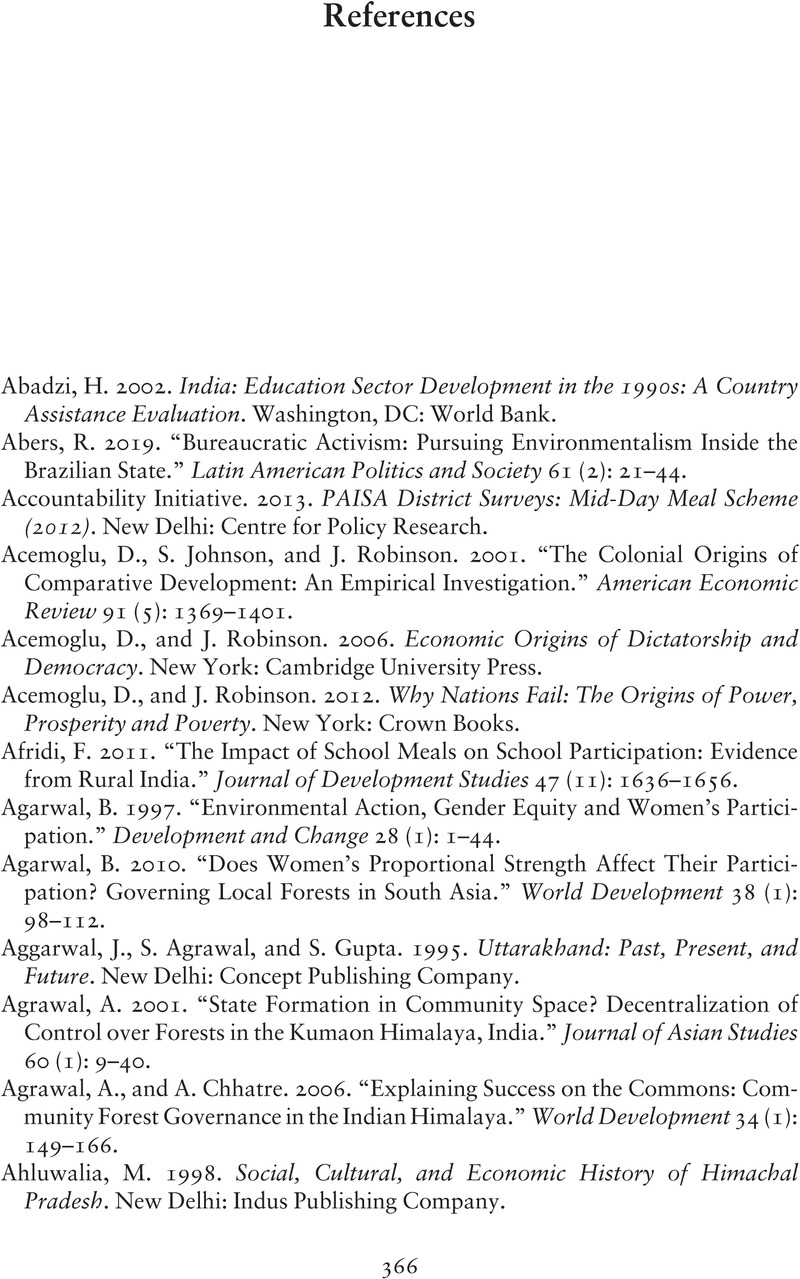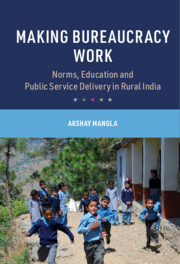Book contents
- Making Bureaucracy Work
- Cambridge Studies in the Comparative Politics of Education
- Making Bureaucracy Work
- Copyright page
- Dedication
- Contents
- Figures
- Tables
- Acknowledgments
- Abbreviations
- Part I Introduction, Puzzles and Theory
- Part II Implementing Primary Education in Northern India
- Part III Comparative Extensions and Implications
- Appendix: Researching Bureaucracy and Frontline Public Services
- References
- Index
- References
References
Published online by Cambridge University Press: 18 November 2022
- Making Bureaucracy Work
- Cambridge Studies in the Comparative Politics of Education
- Making Bureaucracy Work
- Copyright page
- Dedication
- Contents
- Figures
- Tables
- Acknowledgments
- Abbreviations
- Part I Introduction, Puzzles and Theory
- Part II Implementing Primary Education in Northern India
- Part III Comparative Extensions and Implications
- Appendix: Researching Bureaucracy and Frontline Public Services
- References
- Index
- References
Summary

Information
- Type
- Chapter
- Information
- Making Bureaucracy WorkNorms, Education and Public Service Delivery in Rural India, pp. 366 - 404Publisher: Cambridge University PressPrint publication year: 2022
